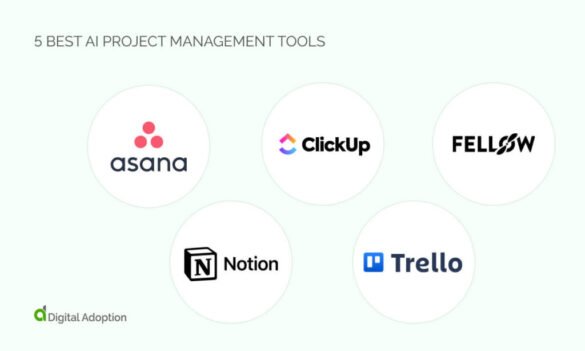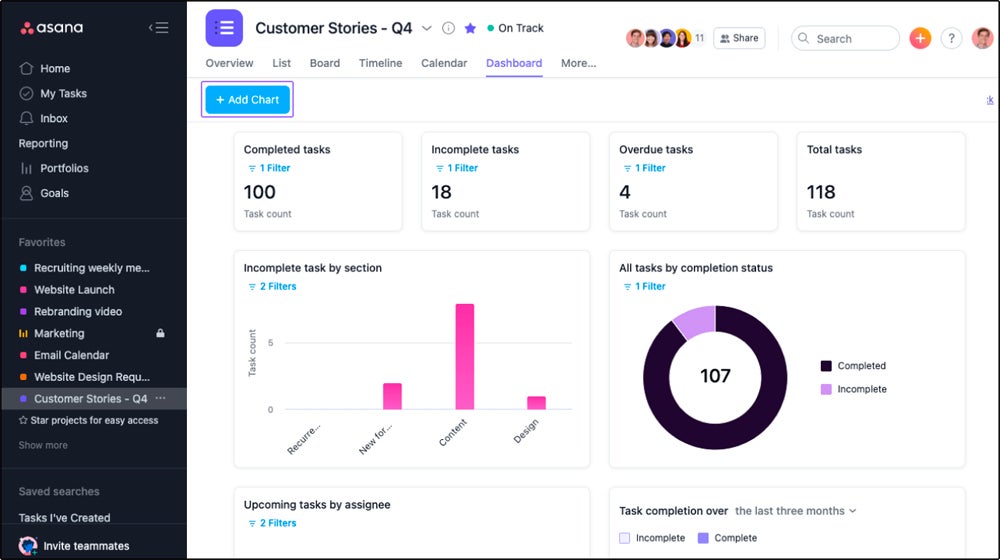
Introduction
Overview of Project Management in the Cloud
In today’s ever-evolving business landscape, project management has transcended traditional boundaries. The rise of cloud technology has revolutionized how teams collaborate, plan, and execute projects across various industries. Cloud-based project management tools enable teams to break free from geographical limitations, allowing for real-time updates and shared access to vital project documents from virtually anywhere.
Imagine a team of software developers based in different countries working tirelessly on a new application. With cloud project management tools, they can communicate effortlessly, share files, assign tasks, and track progress in real time. This seamless integration of tasks not only enhances productivity but also fosters a spirit of collaboration that traditional project management methods often struggle to achieve.
Importance of Utilizing Cloud Tools for Project Management
Utilizing cloud-based tools for project management offers a multitude of advantages that can significantly impact overall project success. Here are some key reasons why organizations are making the switch:
- Accessibility: Team members can access project data anytime and anywhere, making it easier to adjust to the dynamics of remote work.
- Real-time Collaboration: With tools that support simultaneous editing, members can brainstorm ideas, make changes, and provide feedback immediately.
- Cost-Effective: Cloud tools often come with subscription models, reducing the need for hefty upfront investments in software purchases.
- Scalability: As businesses grow, cloud solutions can easily scale to accommodate increased workloads without significant additional investment.
For instance, a marketing agency can take advantage of these cloud capabilities by using project management tools to streamline campaigns across departments. This results in enhanced coordination between marketing, sales, and creative teams, enabling them to deliver projects more efficiently and effectively.
Overall, embracing project management in the cloud not only enhances productivity but enables teams to innovate and respond to market demands with agility. As organizations recognize these benefits, the trend toward cloud-based project management tools continues to gain momentum.
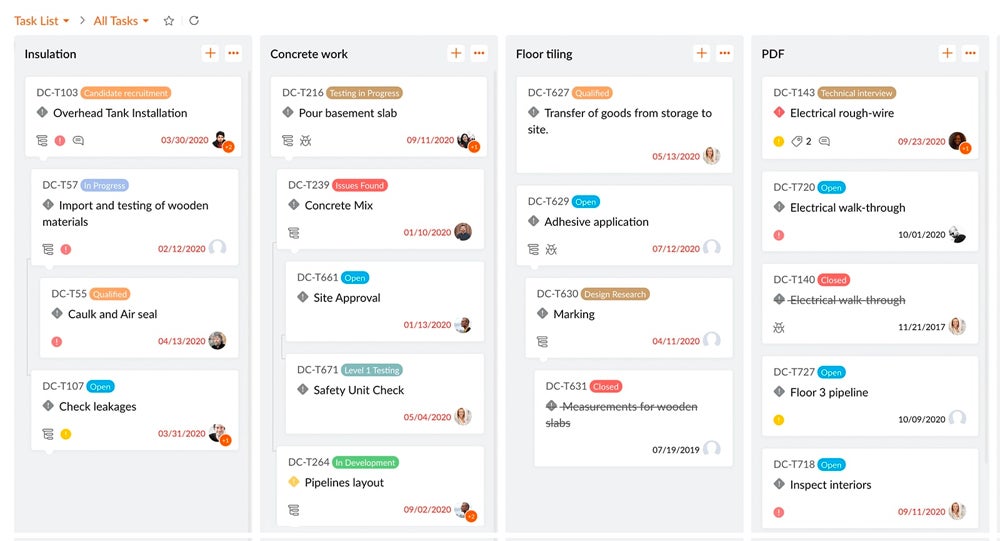
Top 5 Cloud Tools for Project Management
1. Tool A: Features and Benefits
One of the leading cloud tools for project management is Trello. Its visually appealing interface utilizes boards, lists, and cards to help teams organize tasks efficiently. The benefits include:
- User-Friendly Interface: Easy for both tech-savvy and non-tech-savvy users.
- Integration with Other Apps: Connects seamlessly with popular applications like Slack, Google Drive, and more.
- Collaboration Features: Teams can comment on cards, attach files, and even set deadlines.
Trello’s focus on simplicity allows teams anywhere, from marketing agencies to tech startups, to begin managing projects immediately.
2. Tool B: Comparison with Other Tools
When we compare Trello with other project management tools, like Asana, the differences become apparent. While Trello is excellent for visual task management, Asana’s strength lies in its detailed task hierarchy:
- Trello: Best for quick task organization with a visual approach.
- Asana: Offers more features for tracking project progress with timelines and workload management.
Choosing the right tool largely depends on a team’s specific workflow requirements.
3. Tool C: Pricing Plans and Integration Options
Next up is Monday.com, celebrated for its flexibility and a range of pricing plans catering to various team sizes. Here’s a breakdown of its pricing options:
- Basic: $8 per user/month with essential features.
- Standard: $10 per user/month for more advanced features and integrations.
- Pro: $16 per user/month with maximum customizability.
Monday.com integrates seamlessly with other tools, enhancing its functionality.
4. Tool D: User Reviews and Ratings
Basecamp consistently receives high marks from users, particularly for its straightforward approach to project management. According to recent reviews:
- Ease of Use: 4.5/5
- Customer Support: 4.8/5
Users often highlight the simplicity and effectiveness of Basecamp, making it ideal for teams needing a no-frills solution.
5. Tool E: Unique Functionality and Use Cases
Lastly, ClickUp stands out for its unique functionality, offering a comprehensive solution with features like goal tracking and time tracking built into one platform. This all-in-one tool serves diverse teams—from software developers to content creators—by allowing them to track goals alongside daily tasks.
In summary, each tool has its unique features that cater to different project management needs, highlighting the importance of assessing team requirements when selecting the right cloud tool. Quality project management software, like those mentioned, can significantly enhance workflow efficiency and team collaboration.

Considerations When Choosing a Cloud Tool
As teams increasingly adopt cloud-based project management tools, it’s essential to consider several key factors before making a decision. The right choice can significantly impact productivity, collaboration, and overall project success. Here are some crucial considerations to keep in mind.
Compatibility with Existing Systems
First and foremost, assess how well a cloud tool integrates with your current systems. Compatibility can either enhance workflow or create unnecessary friction. Many organizations already use various tools for accounting, communication, and customer relationship management (CRM). Therefore, consider the following:
- Integration Options: Does the tool offer integrations with your existing applications? Tools like Zapier can facilitate many connections.
- API Availability: For custom solutions, an accessible API can allow developers to create tailored integrations between tools.
For instance, a marketing agency that relies heavily on tools like Mailchimp for email campaigns would benefit from a project management tool that seamlessly connects to it, ensuring streamlined communication across platforms.
Security and Data Privacy Concerns
Next, evaluate the security and data privacy policies of potential cloud tools. With the rise of digital data breaches, ensuring your project information remains secure is essential. Key points to consider include:
- Compliance Standards: Look for tools that comply with relevant regulations, such as GDPR or HIPAA, particularly if handling sensitive customer data.
- Encryption Protocols: Data should be encrypted both at rest and in transit to protect against unauthorized access.
Choosing a cloud tool with a robust security track record will provide peace of mind when collaborating on sensitive projects.
Scalability and Customization Options
Lastly, consider the scalability and customization capabilities of the cloud tool. Your organization may evolve, and your project management needs may change over time. Questions to ask include:
- Scalability: Can the tool accommodate an increasing number of users or projects without a significant dip in performance?
- Customization: Does it allow for custom workflows or dashboards to suit your team’s unique processes?
A small startup transitioning into a mid-sized company should look for tools that can grow alongside them, ensuring they aren’t restricted by their project management solution.
By evaluating compatibility, security measures, and scalability when choosing a cloud tool, organizations can make informed decisions that enhance productivity and facilitate long-term success. Adopting the right tool is not just about immediate needs but also about future-proofing project management strategies.
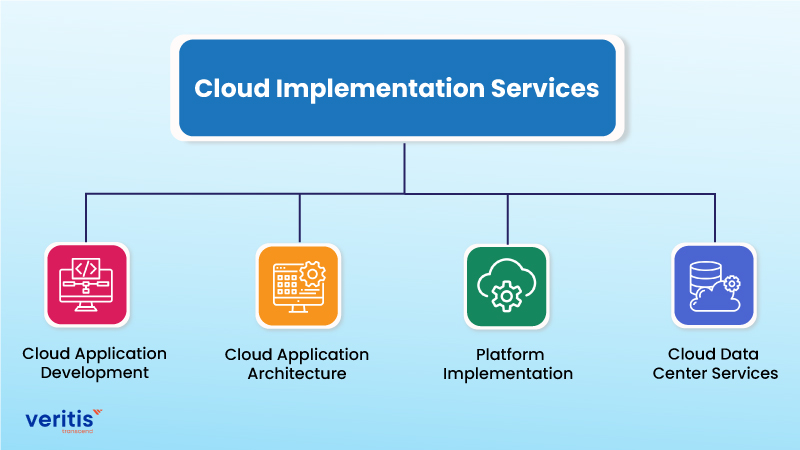
Implementation and Adoption Strategies
Once you’ve assessed various cloud tools and chosen the right one for your team, the next critical step is implementation. Proper setup, training, and strategies for overcoming hurdles will determine how effectively your organization can leverage its new tool.
Setting Up the Cloud Tool for Project Use
The initial setup can significantly influence user experience and adoption. Here are steps to ensure a smooth start:
- Define Project Parameters: Identify the type of projects you’ll be managing and customize the tool accordingly, including creating relevant task lists, boards, or workflows.
- Establish User Roles and Permissions: Clearly define who needs access to what within the system. This not only helps with security but also ensures users can focus on their specific responsibilities.
- Data Migration: Create a plan for transferring existing project data to the cloud tool. This might involve importing files and setting up integrations with other systems you’re currently running.
Having worked with several tools, I can attest that taking the time to meticulously set up your workspace yields a smoother transition for all team members.
Training Team Members and Stakeholders
Once set up, effective training is pivotal. Here’s how to ensure everyone understands how to use the tool proficiently:
- Interactive Training Sessions: Organize workshops or webinars led by experts to familiarize users with the system’s functionalities. Hands-on learning often proves more effective than mere reading material.
- User Guides and Resources: Provide easy-to-access documentation, guides, and FAQs that users can refer to post-training.
- Encourage Peer Learning: Foster a culture where advanced users guide others. This can create a supportive environment and boost user confidence.
An anecdote from a past office transition showed that when team members trained each other, not only did the learning curve decrease, but it also strengthened team cohesion.
Overcoming Challenges in Transitioning to Cloud Project Management
Transitioning to a cloud tool isn’t without its challenges. Common hurdles can include resistance to change or technical issues during the switch. To overcome these:
- Communicate Benefits: Clearly articulate the tool’s advantages. A better user experience or enhanced collaboration can motivate hesitant team members.
- Provide Ongoing Support: Ensure that there’s a system for addressing questions and concerns, whether through a dedicated help desk or regular check-ins.
- Iterate and Adapt: Be prepared to make adjustments based on team feedback. Flexibility can ease fears and enhance user satisfaction.
Implementing a cloud management tool is an expedition rather than a sprint. With a considered approach to setup, training, and addressing challenges, teams can navigate the transition smoothly, paving the way for greater project management success and collaboration.
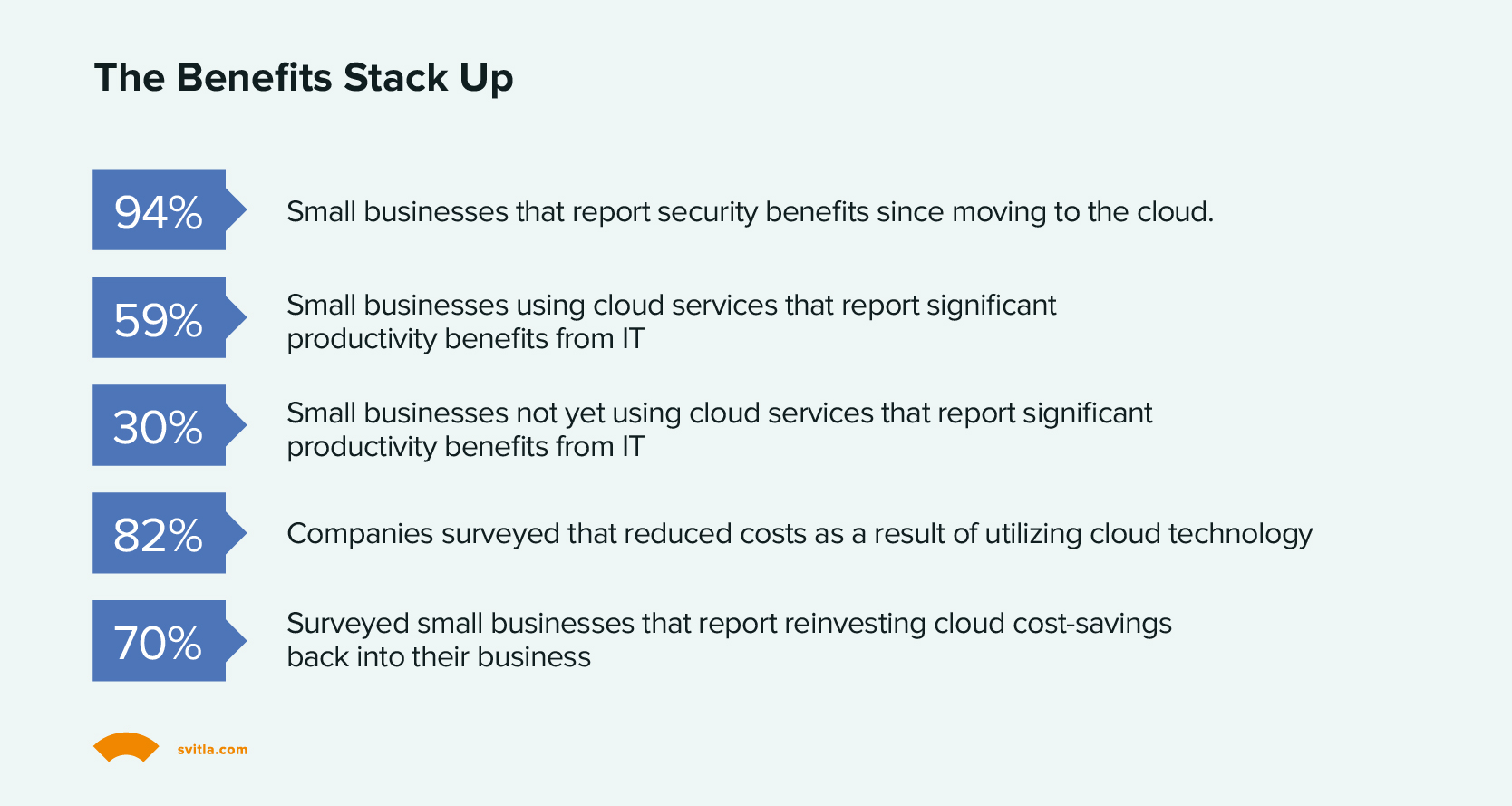
Case Studies and Success Stories
Having explored the considerations for implementation and adoption, let’s dive into real-world examples of companies that have successfully harnessed cloud tools for project management. These case studies illustrate the tangible benefits and lessons learned from their journeys.
Real-world Examples of Companies Using Cloud Tools for Project Management
One notable example is Airbnb, which uses cloud-based tools like Asana to streamline its project management processes. With diverse teams spread globally, coordination and communication are crucial. By adopting Asana, Airbnb has enhanced its ability to manage cross-departmental projects effectively, allowing members to track progress in real time and collaborate seamlessly.
Another case is Spotify, which leverages Jira for its agile project management practices. The company’s reliance on a cloud-based platform helps them manage sprints, track bugs, and prioritize product features efficiently. This tool has become integral to their product development process, fostering collaboration between software developers and project managers.
Benefits and Lessons Learned from Successful Implementations
The benefits these companies have reaped are substantial. From increased efficiency to improved communication, transitioning to cloud tools has positively impacted their operational workflows. Some key takeaways include:
- Enhanced Collaboration: Teams report a significant increase in collaboration, leading to faster project completion times. With asynchronous updates, team members maintain awareness without needing constant meetings.
- Increased Transparency: Cloud tools provide visibility into project statuses, empowering all stakeholders to stay informed about developments and roadblocks. For instance, Spotify’s transparency has allowed team members to align better with overall company goals.
- Flexibility and Adaptability: Both Airbnb and Spotify have demonstrated that adopting cloud solutions cultivates an adaptable culture. The ability to pivot quickly allows them to respond effectively to market changes or unexpected challenges.
One valuable lesson learned by these organizations is the importance of ongoing training and support. Even with an initial smooth rollout, continued education ensures that team members maximize the tool’s potential.
In conclusion, successful case studies from various industries reveal that implementing cloud project management tools can empower teams by fostering collaboration, transparency, and adaptability. By learning from these experiences, other organizations can pave their way toward similar successes and enhanced project outcomes.

Future Trends in Cloud Project Management
As we venture into the future of project management, the landscape is rapidly evolving with the integration of emerging technologies. The innovations that are taking root today promise to redefine how teams collaborate, manage tasks, and analyze data.
Emerging Technologies and Innovations in the Field
A significant trend is the increasing use of Artificial Intelligence (AI) in cloud project management tools. AI capabilities can automate repetitive tasks, analyze team performance, and even predict project risks. Tools equipped with AI can provide insights that enable proactive decision-making. For instance:
- Automated Task Assignments: AI can evaluate team members’ workloads and skills to suggest the best-fit resources for specific tasks.
- Predictive Analytics: By analyzing historical data, AI can forecast project timelines and potential roadblocks, allowing for preemptive measures.
Another innovation is the rise of collaborative platforms that combine traditional project management with communication tools. Companies like Slack and Microsoft Teams are integrating project management features, so teams can communicate and collaborate in one space. This holistic approach minimizes context-switching and keeps everyone on the same page.
Predictions for the Future of Cloud-Based Project Management Systems
Looking ahead, we can expect several key predictions for cloud-based project management systems:
- Increased Personalization: Future tools will likely offer deeper customization options, allowing teams to tailor workflows and dashboards to their unique needs. Imagine a tool that learns your preferences and suggests tools and features based on previous projects!
- Enhanced Integrations: As businesses rely on a myriad of applications, we can anticipate further developments in integrations. A future where all tools seamlessly exchange information will improve efficiency and reduce manual data entry.
- Emphasis on Remote Collaboration: As remote work becomes even more commonplace, cloud project management tools will likely incorporate features designed to enhance virtual teamwork, such as augmented reality (AR) for better visualization of team dynamics.
In my personal experience, anticipating these trends can guide organizations in making informed investment decisions and staying ahead of the competition. By proactively embracing these innovations, teams can cultivate resilience and maintain their competitive edge in an ever-changing business environment.
In summary, the future of cloud project management is bright, with emerging technologies and innovative strategies poised to enhance how teams work together. As organizations continue to embrace this evolution, the possibilities for improved efficiency and collaboration are limitless.
